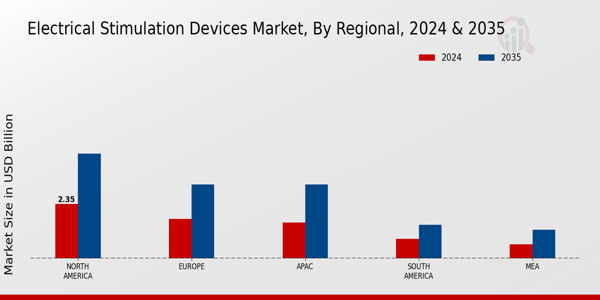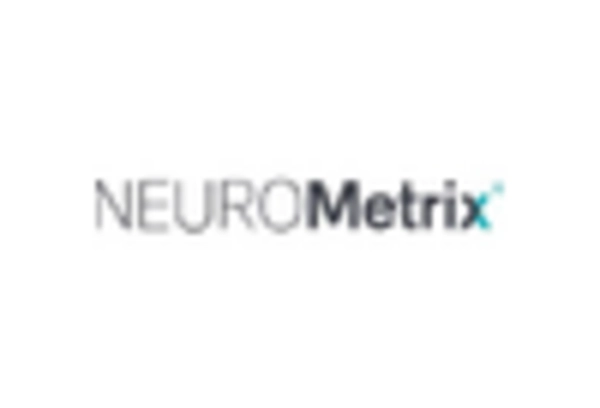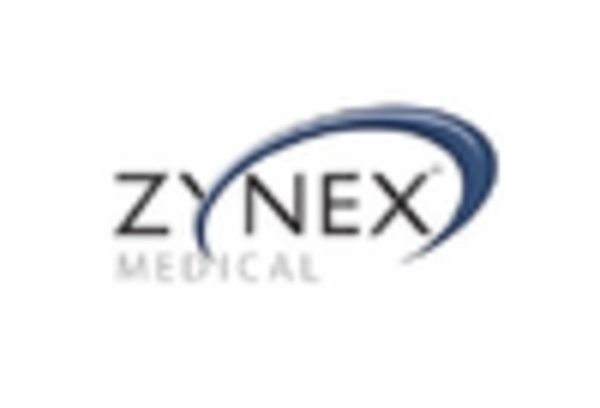Expansion of Rehabilitation Programs
The expansion of rehabilitation programs across various healthcare settings is a crucial driver for the Electrical Stimulation Devices Market. As healthcare systems increasingly recognize the importance of rehabilitation in recovery processes, there is a heightened focus on integrating electrical stimulation devices into these programs. These devices are utilized to enhance muscle strength, improve mobility, and facilitate recovery from injuries or surgeries. The market is witnessing a notable increase in partnerships between rehabilitation centers and device manufacturers, aimed at providing comprehensive treatment solutions. Furthermore, the integration of electrical stimulation devices into physical therapy protocols is becoming more common, thereby enhancing patient outcomes. This trend is expected to contribute to the sustained growth of the Electrical Stimulation Devices Market.
Aging Population and Associated Health Issues
The aging population is a significant demographic factor driving the Electrical Stimulation Devices Market. As individuals age, they often experience a range of health issues, including chronic pain, mobility limitations, and neurological disorders. This demographic shift is leading to an increased demand for effective treatment options that can address these challenges. Market projections suggest that the elderly population will continue to grow, with estimates indicating that by 2030, one in six people will be aged 60 or over. This trend is likely to result in a higher prevalence of conditions that can benefit from electrical stimulation therapies, thereby expanding the market. Manufacturers are thus focusing on developing devices tailored to the needs of older adults, further propelling the growth of the Electrical Stimulation Devices Market.
Increasing Prevalence of Chronic Pain Conditions
The rising incidence of chronic pain conditions is a pivotal driver for the Electrical Stimulation Devices Market. Conditions such as arthritis, fibromyalgia, and neuropathic pain are becoming more prevalent, affecting millions of individuals worldwide. This trend is likely to escalate the demand for effective pain management solutions, including electrical stimulation devices. According to recent estimates, chronic pain affects approximately 20 percent of adults, leading to a significant market opportunity for manufacturers. As healthcare providers seek innovative ways to alleviate pain without relying solely on pharmaceuticals, the adoption of electrical stimulation devices is expected to grow. This shift towards non-invasive treatment options aligns with the broader trend of patient-centered care, further propelling the Electrical Stimulation Devices Market.
Rising Awareness of Non-Invasive Treatment Options
There is a growing awareness among patients and healthcare professionals regarding the benefits of non-invasive treatment options, which is significantly influencing the Electrical Stimulation Devices Market. Patients are increasingly seeking alternatives to invasive procedures and long-term medication use, which can have adverse side effects. This shift in patient preference is prompting healthcare providers to recommend electrical stimulation devices as viable options for pain relief and rehabilitation. Market data indicates that the demand for non-invasive therapies is projected to grow at a compound annual growth rate of over 8 percent in the coming years. This trend is likely to drive investments in research and development, leading to the introduction of more advanced electrical stimulation devices that cater to diverse patient needs.
Technological Innovations in Electrical Stimulation
Technological advancements are transforming the Electrical Stimulation Devices Market, enhancing the efficacy and usability of these devices. Innovations such as wireless technology, miniaturization, and improved battery life are making electrical stimulation devices more accessible and user-friendly. For instance, the integration of smart technology allows for personalized treatment plans, enabling patients to adjust settings based on their specific needs. Furthermore, advancements in electrode design and materials are improving the comfort and effectiveness of these devices. As a result, the market is witnessing a surge in product launches that incorporate these cutting-edge technologies. This trend not only attracts new consumers but also encourages existing users to upgrade, thereby expanding the market reach and potential revenue streams for manufacturers.


















Leave a Comment